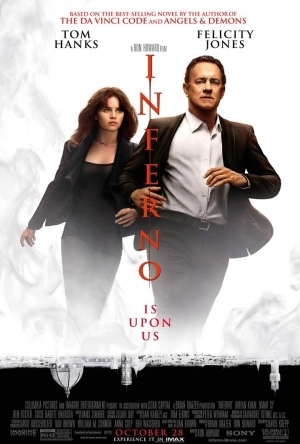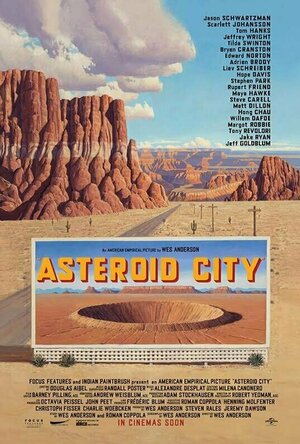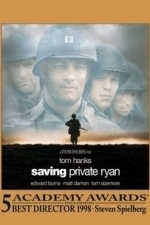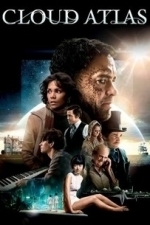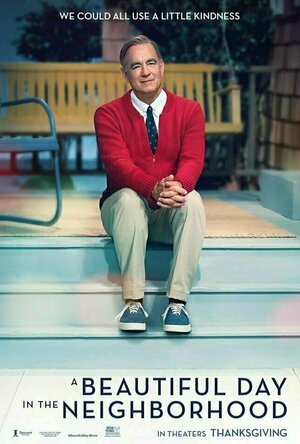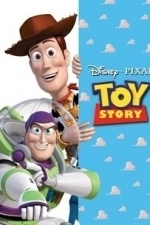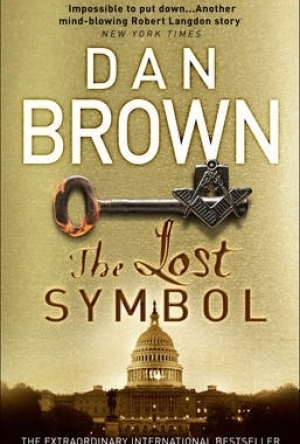Search

Beautiful Writers Podcast
Podcast
Writer Linda Sivertsen (aka Book Mama) brings together the world’s most beloved bestselling...

Eating Animals
Book
Eating Animals is Jonathan Safran Foer's eye-opening account of where meat comes from 'I simply...
Gareth von Kallenbach (980 KP) rated Inferno (2016) in Movies
Jul 15, 2019
Inferno is the latest thriller based on the novels of Dan Brown that follow the fictional character of Robert Langdon who is a world renowned symbologist (study of symbols). Like The DaVinci Code and Angels & Demons before them, Inferno follows mostly the same story arch and structure.
Tom Hanks has reprised his role as Robert Langdon (this time with an appropriate haircut) and once again he travels around to beautiful locations of European art and architecture with a young woman by his side, trying to solve a series of clues in order to stop a billionaire madman who believes humanity is a parasite and his plague inferno is the cure. If this sounds like a film you have seen before, it is because you have. In the other two movies that have come before it
Once again, audiences will enjoy being whisked around to see beautiful cities, art, and architecture to solve historical literary clues as the film plays out like a late middle ages travel lesson. These are all good things.
The bad is that during the first half of the film, Robert Langdon has amnesia due to a blow to the head. He cannot remember much which of what he was doing, which makes him a less compelling character. Throughout the series of films, Langdon has used his “dizzying intellect” to solve clues the brightest minds could not solve. In Inferno, that “super power” is taken away and we are left with an average, middle aged man, who is somehow able to solve impossible puzzles and clues while being chased by seedy underground characters and the world health organization. Who for the purposes of this film, seem to have become the FBI/CIA in one. This setup does not work and makes for a boring first half of the film Eventually Langdon regains his memory and the film picks up a bit from there, but for some it might be too late.
As far as the performances go, Tom Hanks delivers a watchable, likable performance, much to his credit considering that the character of Robert Langdon is a relatively boring protagonist. Meanwhile Ben Foster plays the somewhat forgettable billionaire madman (Bertrand Zobrist) in a somewhat forgettable way. It is a shame because perhaps if we had a chance to understand the nuance of his character, like I assume can be done in the books, he would have felt like a more compelling character and caused us to think if he was to be on the right side of history. Unfortunately, any nuance from the book does not translate well to the film adaptation. But not all is lost. For me, the bright spot of the film was Felicity Jones who plays the gifted doctor Sienna Brooks. Brooks, who in helping Langdon with his injury, gets swept up into game for the fate of the world. In her performance, Felicity Jones shows a transition of her emotional resonance throughout the film as her character develops and we get to understand her more, for better or worse. I am excited to see Jones continue to grow in her career and look forward to seeing her this holiday’s Star Wars Story: Rouge One. She has the ability to carry a film, let’s hope she is given the opportunity to do so.
In the end, Inferno is not a terrible film, but it is not very memorable either. Unlike the two films before it, Robert Langdon is handcuffed by an injury that doesn’t allow him to use his intellect that made him compelling before Couple that with what seems like an inspector gadget plot, where the bad guy leave a series of clues to foil his own master plan, and you end up with a “Meh” film.
Tom Hanks has reprised his role as Robert Langdon (this time with an appropriate haircut) and once again he travels around to beautiful locations of European art and architecture with a young woman by his side, trying to solve a series of clues in order to stop a billionaire madman who believes humanity is a parasite and his plague inferno is the cure. If this sounds like a film you have seen before, it is because you have. In the other two movies that have come before it
Once again, audiences will enjoy being whisked around to see beautiful cities, art, and architecture to solve historical literary clues as the film plays out like a late middle ages travel lesson. These are all good things.
The bad is that during the first half of the film, Robert Langdon has amnesia due to a blow to the head. He cannot remember much which of what he was doing, which makes him a less compelling character. Throughout the series of films, Langdon has used his “dizzying intellect” to solve clues the brightest minds could not solve. In Inferno, that “super power” is taken away and we are left with an average, middle aged man, who is somehow able to solve impossible puzzles and clues while being chased by seedy underground characters and the world health organization. Who for the purposes of this film, seem to have become the FBI/CIA in one. This setup does not work and makes for a boring first half of the film Eventually Langdon regains his memory and the film picks up a bit from there, but for some it might be too late.
As far as the performances go, Tom Hanks delivers a watchable, likable performance, much to his credit considering that the character of Robert Langdon is a relatively boring protagonist. Meanwhile Ben Foster plays the somewhat forgettable billionaire madman (Bertrand Zobrist) in a somewhat forgettable way. It is a shame because perhaps if we had a chance to understand the nuance of his character, like I assume can be done in the books, he would have felt like a more compelling character and caused us to think if he was to be on the right side of history. Unfortunately, any nuance from the book does not translate well to the film adaptation. But not all is lost. For me, the bright spot of the film was Felicity Jones who plays the gifted doctor Sienna Brooks. Brooks, who in helping Langdon with his injury, gets swept up into game for the fate of the world. In her performance, Felicity Jones shows a transition of her emotional resonance throughout the film as her character develops and we get to understand her more, for better or worse. I am excited to see Jones continue to grow in her career and look forward to seeing her this holiday’s Star Wars Story: Rouge One. She has the ability to carry a film, let’s hope she is given the opportunity to do so.
In the end, Inferno is not a terrible film, but it is not very memorable either. Unlike the two films before it, Robert Langdon is handcuffed by an injury that doesn’t allow him to use his intellect that made him compelling before Couple that with what seems like an inspector gadget plot, where the bad guy leave a series of clues to foil his own master plan, and you end up with a “Meh” film.
BankofMarquis (1832 KP) rated Asteroid City (2023) in Movies
Jun 30, 2023
Too "Wes Anderson" For It's Own Good
If you watched the Oscar Nominated Wes Anderson film THE GRAND BUDAPEST HOTEL back in 2014 and thought to yourself - “I want more of this type of thing - only turned up to 11”, then does the BankofMarquis have a film for you.
ASTEROID CITY is the most Wes Anderson film that Wes Anderson has ever filmed.
It is up to you to decide whether that’s a good or bad thing.
A movie within a play within a narration (yes, it’s that “meta”), ASTEROID CITY tells the tale of a group of folks congregating in a timeframe that seems to scream “1950’s America” in a very small, isolated Southwestern American town that seems to scream “Los Alamos, New Mexico” and the life, loves, adventures - and wry comments of the events therein - that these folks encounter/endure all wrapped up in the pastel colored, dry-pan delivered style that has become the signature of a Wes Anderson film.
Populated - as is always the case these days with a Wes Anderson film - by a veritable who’s who of actors who seem to be in on the joke - or at least want to appear that they are part of the “cool kids club”. Names like Anderson regulars Jason Schwartzman, Liev Schrieber, Willem Dafoe and Ed Norton mix in with Anderson newcomers like Tom Hanks, Steve Carrell and Scarlett Johansson succeed more than they fail, but the film falls down from the heights of THE GRAND BUDAPEST HOTEL by becoming “too cute” for it’s own good.
Central to the story is the relationship between Schwartzman’s War Photographer and Johansson’s movie star but this relationship fails to draw the audience in because of the presentational, deadpan style of Anderson’s delivery of the material. Same goes for Hanks’ portrayal of Schwartzman’s father, Carrell’s portrayal of the Motel Manager and Schrieber’s portrayal of another parent at the hotel.
Jeffrey Wright and Tilda Swinton are the most successful of the players as their characters are aloof and mysterious - and the style that Anderson throws at this film leans towards these types of characters…but it leaves the audience at arms’ length.
Special notice should be made of Margot Robbie’s one scene as her character is spoken of, but not seen…until she is.. and her scene is the most interesting in the film.
And…the BankofMarquis hasn’t even mentioned Edward Norton’s playwright (who writes the play that this movie is based on) and Adrian Brody as the Director of the play. The are brought on screen from time to time to archly comment and/or explain the goings-on.
This being an Anderson film, the visuals are stunning and original (but, ironically, familiar to Wes Anderson regulars) and this is the main reason to see this film, it is visually rich and interesting…and different…of a film to look at.
But…Wes Anderson needed to lean away (not into) being…Wes Anderson.
Letter Grade: B
7 stars (out of 10) and you can take that to the Bank(ofMarquis)
ASTEROID CITY is the most Wes Anderson film that Wes Anderson has ever filmed.
It is up to you to decide whether that’s a good or bad thing.
A movie within a play within a narration (yes, it’s that “meta”), ASTEROID CITY tells the tale of a group of folks congregating in a timeframe that seems to scream “1950’s America” in a very small, isolated Southwestern American town that seems to scream “Los Alamos, New Mexico” and the life, loves, adventures - and wry comments of the events therein - that these folks encounter/endure all wrapped up in the pastel colored, dry-pan delivered style that has become the signature of a Wes Anderson film.
Populated - as is always the case these days with a Wes Anderson film - by a veritable who’s who of actors who seem to be in on the joke - or at least want to appear that they are part of the “cool kids club”. Names like Anderson regulars Jason Schwartzman, Liev Schrieber, Willem Dafoe and Ed Norton mix in with Anderson newcomers like Tom Hanks, Steve Carrell and Scarlett Johansson succeed more than they fail, but the film falls down from the heights of THE GRAND BUDAPEST HOTEL by becoming “too cute” for it’s own good.
Central to the story is the relationship between Schwartzman’s War Photographer and Johansson’s movie star but this relationship fails to draw the audience in because of the presentational, deadpan style of Anderson’s delivery of the material. Same goes for Hanks’ portrayal of Schwartzman’s father, Carrell’s portrayal of the Motel Manager and Schrieber’s portrayal of another parent at the hotel.
Jeffrey Wright and Tilda Swinton are the most successful of the players as their characters are aloof and mysterious - and the style that Anderson throws at this film leans towards these types of characters…but it leaves the audience at arms’ length.
Special notice should be made of Margot Robbie’s one scene as her character is spoken of, but not seen…until she is.. and her scene is the most interesting in the film.
And…the BankofMarquis hasn’t even mentioned Edward Norton’s playwright (who writes the play that this movie is based on) and Adrian Brody as the Director of the play. The are brought on screen from time to time to archly comment and/or explain the goings-on.
This being an Anderson film, the visuals are stunning and original (but, ironically, familiar to Wes Anderson regulars) and this is the main reason to see this film, it is visually rich and interesting…and different…of a film to look at.
But…Wes Anderson needed to lean away (not into) being…Wes Anderson.
Letter Grade: B
7 stars (out of 10) and you can take that to the Bank(ofMarquis)
Phillip McSween (751 KP) rated Saving Private Ryan (1998) in Movies
Apr 13, 2020
One of the GOATS
At the time of this writing, Saving Private Ryan is sitting at fourteen on my all-time list. It is one of those once-in-a-lifetime movies that doesn’t come along too often. The story revolves around an army captain in WWII taking his men on a suicide mission to rescue a private before he is killed in action. Private Ryan’s three brothers have already been killed in action and the military wants to get the remaining Ryan home so his mother won’t have lost all of her children in one war.
Acting: 10
Where do I start? With Tom Hanks and his brilliant performance as Captain John Miller? Vin Diesel in probably one of his best roles as Private Caparzo. Tom Sizemore…Matt Damon…There are so many amazing performances that contributed to the greatness of this movie. You usually see it in glimpses as each character doesn’t get much in the way of their own screen time. The movie is packed with so many of those glimpse moments from these stellar actors, it’s hard to forget each of their roles.
Beginning: 10
Boasts one of the best opening twenty minutes in movie history. It’s violent, touching, and sucks you right in to the meat of the movie. There is so much intensity here, from the raucous sounds to the visceral feel of everything, that it’s hard to catch your breath afterwards.
Characters: 10
Cinematography/Visuals: 10
Conflict: 10
If you want knock-your-socks-off action from beginning to end, Saving Private Ryan is absolutely the movie for you. The battles are amazing giving you a front row seat to World War II. Steven Spielberg relies on a number of different camera angles to give you the full effect. Every scene is heartstopping as you realize the stakes and understand that no one is safe in this ultimate battle to stay alive. This movie has more action in the first twenty minutes than most films do through their entirety.
Entertainment Value: 10
Memorability: 10
Pace: 10
Plot: 10
For the most part, the story is pretty linear. There is a mission. Go and complete the mission. The end. However, there are two existing twists within the movie that definitely make things more interesting and entertaining. Those small tweaks were enough to satisfy my craving for originality.
Resolution: 10
Overall: 100
There is a scene on the beach where the camera shoots from underwater then repeatedly rises and falls in the water showing the grit of everything happening. This is one of a number of shots that makes Saving Private Ryan one of the all-time movies to ever exist in cinema. This movie is flat out amazing.
Acting: 10
Where do I start? With Tom Hanks and his brilliant performance as Captain John Miller? Vin Diesel in probably one of his best roles as Private Caparzo. Tom Sizemore…Matt Damon…There are so many amazing performances that contributed to the greatness of this movie. You usually see it in glimpses as each character doesn’t get much in the way of their own screen time. The movie is packed with so many of those glimpse moments from these stellar actors, it’s hard to forget each of their roles.
Beginning: 10
Boasts one of the best opening twenty minutes in movie history. It’s violent, touching, and sucks you right in to the meat of the movie. There is so much intensity here, from the raucous sounds to the visceral feel of everything, that it’s hard to catch your breath afterwards.
Characters: 10
Cinematography/Visuals: 10
Conflict: 10
If you want knock-your-socks-off action from beginning to end, Saving Private Ryan is absolutely the movie for you. The battles are amazing giving you a front row seat to World War II. Steven Spielberg relies on a number of different camera angles to give you the full effect. Every scene is heartstopping as you realize the stakes and understand that no one is safe in this ultimate battle to stay alive. This movie has more action in the first twenty minutes than most films do through their entirety.
Entertainment Value: 10
Memorability: 10
Pace: 10
Plot: 10
For the most part, the story is pretty linear. There is a mission. Go and complete the mission. The end. However, there are two existing twists within the movie that definitely make things more interesting and entertaining. Those small tweaks were enough to satisfy my craving for originality.
Resolution: 10
Overall: 100
There is a scene on the beach where the camera shoots from underwater then repeatedly rises and falls in the water showing the grit of everything happening. This is one of a number of shots that makes Saving Private Ryan one of the all-time movies to ever exist in cinema. This movie is flat out amazing.
Gareth von Kallenbach (980 KP) rated Cloud Atlas (2012) in Movies
Aug 7, 2019
While I am not familiar with the novel, I was not excited to review the film adaptation of David Mitchell’s Cloud Atlas. Though the Screenplay was written and directed by the Wachowskis (The Matrix) and Tom Tykwer (Run Lola Run) I did not know exactly what I was getting into. The trailer shows it as an epic sci-fi film crossing the time and lives of several stories and how everything and everyone is connected. Needless to say my curiosity was piqued. But I was nervous because I knew it would take a grand effort to keep this epic and ambitious project from falling flat. And well, I can honestly say that I am not quite sure if the combined effort succeeded.
Allow me to explain. About an hour into the film I had a young film reviewer to my left and I noticed he started to nod his head in approval at each new developing story throughout the film. To my right was a friend of mine, I would consider as an average film viewer, who at this same time I could tell was counting the minutes till the lights came up but felt trapped with nowhere to go but forward. And for me, I can see both sides of these reactions.
The plot is comprised of a multi-narrative of six stories, each with a complete beginning, middle and end. These stories are told from different timelines following a group of souls throughout the ages to show how everything is woven together and the connection between them; From the 1849 slave trader, to a young composer in 1936 Britain, to a 1973 journalist attempting to uncover corruption of the big business ruling class, to a 2012 literary publisher who’s life becomes a daring escape from a geriatric home, to a 2144 Neo-Soul synthetic learning to become human, to a post-apocalyptic tribesman trying to save his world and family… Lost yet? Believe me you will want to focus during the first hour of this film as we are introduced to the sudden shift of timelines. All of the main actors appear as varying characters of significance in every narrative, each with different accents and types of language. It is a bit of an unexpected bother to keep everything straight at first, however if you pay attention it is fairly easy to follow. This first hour is where I feel the film becomes a make or break for those actively thinking about what they are watching and the average movie viewer who is just there to be entertained and see the new Tom Hanks (Extremely Loud and Incredibly Close) or Halle Berry (Perfect Stanger) movie. For those who make it through that first hour still engaged, the film moves along at a steady pace and provides everything from romance to action that keeps you guessing and intrigued at what is next to come.
The Wachowskis and Tykwer do an outstanding job of visually fleshing out each timeline in its own visual style, especially the futuristic ones, which subtlety organize each narrative for the viewer. Additionally, there are so many talented actors in this film and it is somewhat fascinating to try and pick them out throughout the film. It is almost like a giant game of Where’s Waldo on screen as the makeup and special effects artists do a fantastic job of making the actors fit each character in every timeline. In fact, during the fourth or fifth timeline a lady in my row asked her partner if the man on screen was Forrest Gump, which was surprising because Hanks was the easiest character to pick out among them all.
Tom Hanks delivers one of his better performances in years. We watch his character’s soul transition from a sinister and vile doctor to a tribesman making the righteous choice while struggling with that inkling of evil that is the devil within us all. It was refreshing to see Hanks play parts that were not just an “everyman” that he has played in recent years.
Halle Berry’s performance is mostly average in her parts with the exception of 1973 journalist role where she is the main protagonist. Hugo Weaving channels a bit of his Agent Smith role from The Matrix as he plays a villain throughout the timelines. Hugh Grant (Love Actually) makes unexpected soild appearances throughout the timelines. With Jim Sturgess (One Day), James D’Arcy (Mansfield Park) and Ben Whishaw (who is the new Q in the upcoming James Bond film Skyfall) rounding out the cast with a young contrast to the already heavy acting handled by the bigger names of this film. Each of these young actors hold’s their own against their older more notable counterparts. Whishaw’s performance as the lead in the 1936 composer role is especially noteworthy.
The other stand out performance in the film comes from Jim Broadbent best known in the states as Professor Slughorn in the Harry Potter Films. His performance in the 1936 composer and 2012 literary publisher are excellent. The Publisher story was my favorite timeline throughout the film. Not only did it deliver some much needed comic relief to an emotionally engaging and heavy film, but it also made me care the most about the elderly characters trying to escape the clutches of the geriatric prison of a nursing home. Unfortunately, other than the aforementioned comic relief this timeline seemed the most unnecessary to the overarching story at hand.
When I left the film and talked it over with my friend I was indifferent to the film. It was not great, it was not bad either. As my friend described it, it was a movie that was trying too hard. We agreed that somewhere in the six storylines there may be a great film, but we were not sure if we watched it.
However as the days have passed I have found myself thinking about the stories constantly. More specifically about how the main protagonist played by a different actor in each narrative has the same birthmark of a shooting star that in some way symbolizes some universal soul encompassing a new shell of a body in each timeline. Like some kind of reincarnation of that soul is fighting the same revolution throughout the ages against the powerful class and illusion of natural order. Additionally how each of the central characters found themselves connected with the main characters in the stories that preceded them through some kind of medium; whether it was by an old journal, or love letters, or a written story, or film, or message of hope. These subtle insights of growth and change for this main soul leaping into a new life in each timeline has caused me to examine our world and how we as people can be truly connected to one another not only today, but throughout the ages. I want to view the film again and am inspired to read the novel in some sort of effort to better understand these concepts.
Nevertheless as a film that is almost three hours long it does its best to be an epic sci-fi film and give something for everyone. And while it succeeds in many aspects of feel, it also falls short in aspects that are probably best accomplished in a literary form. As I said above, somewhere in the six storylines there may be a great film, but I am not sure if I watched it. Or maybe I am not intelligent enough to comprehend it. Because of that I can only give it an average score. Though I believe if you ask me after a second viewing, I may be inclined to raise it.
Allow me to explain. About an hour into the film I had a young film reviewer to my left and I noticed he started to nod his head in approval at each new developing story throughout the film. To my right was a friend of mine, I would consider as an average film viewer, who at this same time I could tell was counting the minutes till the lights came up but felt trapped with nowhere to go but forward. And for me, I can see both sides of these reactions.
The plot is comprised of a multi-narrative of six stories, each with a complete beginning, middle and end. These stories are told from different timelines following a group of souls throughout the ages to show how everything is woven together and the connection between them; From the 1849 slave trader, to a young composer in 1936 Britain, to a 1973 journalist attempting to uncover corruption of the big business ruling class, to a 2012 literary publisher who’s life becomes a daring escape from a geriatric home, to a 2144 Neo-Soul synthetic learning to become human, to a post-apocalyptic tribesman trying to save his world and family… Lost yet? Believe me you will want to focus during the first hour of this film as we are introduced to the sudden shift of timelines. All of the main actors appear as varying characters of significance in every narrative, each with different accents and types of language. It is a bit of an unexpected bother to keep everything straight at first, however if you pay attention it is fairly easy to follow. This first hour is where I feel the film becomes a make or break for those actively thinking about what they are watching and the average movie viewer who is just there to be entertained and see the new Tom Hanks (Extremely Loud and Incredibly Close) or Halle Berry (Perfect Stanger) movie. For those who make it through that first hour still engaged, the film moves along at a steady pace and provides everything from romance to action that keeps you guessing and intrigued at what is next to come.
The Wachowskis and Tykwer do an outstanding job of visually fleshing out each timeline in its own visual style, especially the futuristic ones, which subtlety organize each narrative for the viewer. Additionally, there are so many talented actors in this film and it is somewhat fascinating to try and pick them out throughout the film. It is almost like a giant game of Where’s Waldo on screen as the makeup and special effects artists do a fantastic job of making the actors fit each character in every timeline. In fact, during the fourth or fifth timeline a lady in my row asked her partner if the man on screen was Forrest Gump, which was surprising because Hanks was the easiest character to pick out among them all.
Tom Hanks delivers one of his better performances in years. We watch his character’s soul transition from a sinister and vile doctor to a tribesman making the righteous choice while struggling with that inkling of evil that is the devil within us all. It was refreshing to see Hanks play parts that were not just an “everyman” that he has played in recent years.
Halle Berry’s performance is mostly average in her parts with the exception of 1973 journalist role where she is the main protagonist. Hugo Weaving channels a bit of his Agent Smith role from The Matrix as he plays a villain throughout the timelines. Hugh Grant (Love Actually) makes unexpected soild appearances throughout the timelines. With Jim Sturgess (One Day), James D’Arcy (Mansfield Park) and Ben Whishaw (who is the new Q in the upcoming James Bond film Skyfall) rounding out the cast with a young contrast to the already heavy acting handled by the bigger names of this film. Each of these young actors hold’s their own against their older more notable counterparts. Whishaw’s performance as the lead in the 1936 composer role is especially noteworthy.
The other stand out performance in the film comes from Jim Broadbent best known in the states as Professor Slughorn in the Harry Potter Films. His performance in the 1936 composer and 2012 literary publisher are excellent. The Publisher story was my favorite timeline throughout the film. Not only did it deliver some much needed comic relief to an emotionally engaging and heavy film, but it also made me care the most about the elderly characters trying to escape the clutches of the geriatric prison of a nursing home. Unfortunately, other than the aforementioned comic relief this timeline seemed the most unnecessary to the overarching story at hand.
When I left the film and talked it over with my friend I was indifferent to the film. It was not great, it was not bad either. As my friend described it, it was a movie that was trying too hard. We agreed that somewhere in the six storylines there may be a great film, but we were not sure if we watched it.
However as the days have passed I have found myself thinking about the stories constantly. More specifically about how the main protagonist played by a different actor in each narrative has the same birthmark of a shooting star that in some way symbolizes some universal soul encompassing a new shell of a body in each timeline. Like some kind of reincarnation of that soul is fighting the same revolution throughout the ages against the powerful class and illusion of natural order. Additionally how each of the central characters found themselves connected with the main characters in the stories that preceded them through some kind of medium; whether it was by an old journal, or love letters, or a written story, or film, or message of hope. These subtle insights of growth and change for this main soul leaping into a new life in each timeline has caused me to examine our world and how we as people can be truly connected to one another not only today, but throughout the ages. I want to view the film again and am inspired to read the novel in some sort of effort to better understand these concepts.
Nevertheless as a film that is almost three hours long it does its best to be an epic sci-fi film and give something for everyone. And while it succeeds in many aspects of feel, it also falls short in aspects that are probably best accomplished in a literary form. As I said above, somewhere in the six storylines there may be a great film, but I am not sure if I watched it. Or maybe I am not intelligent enough to comprehend it. Because of that I can only give it an average score. Though I believe if you ask me after a second viewing, I may be inclined to raise it.
Neon's Nerd Nexus (360 KP) rated A Beautiful Day in the Neighborhood (2019) in Movies
Feb 2, 2020 (Updated Feb 2, 2020)
Hello Neighbor
A Beautiful Day In The Neighborhood is an inspiring and delightful film about a man that was oh so smart and oh so pleasant. I just want to say from the start what an absolute joy this film was to watch, there was something so warm and wonderful there constantly that kept my full attention the entire time and when it ended I almost felt sad there wasnt more of it. Tom Hanks plays Fred Rogers aka Mr Rogers as hes known by most. An intriguing man who is almost investigated/interrogated by writer Lloyd Voge who has many troubles of his own. Hanks transforms seamlessly into Rogers with all his mannerisms replicated flawlessly even down to whats going on behined his eyes. Rogers may seem like theres something more sinister behined him at times but truth is he had a troubled past too and while maybe not a war veteran its almost as if you can see signs of depression or ptsd behined those eyes from the way he was treated in his youth of from the general weight of his job. But its the way the way hes learnt to deal with his anger, frustrations and demons thats so fascinating and how he manages to keep stong/humble so he can teach other children to overcome the harshness of life and the dark times they may face ahead of them thats trully inspiring and commendable. Llyods transformation during the film is also depicted amazingly too, hes so troubled hes almost beyond help, struggling with such emotions as grief, hatred and stress hes seemingly stuck on an ever declining path of sadness. That is until he meets rogers and the on screen interactions between these two are the absolute bread and butter to watch here as rogers uses his philosophy and good nature to help him find happiness in himself once again. See the thing is adults tend to dismiss anything they consider 'childish' but more often than not these so called childish things they dismiss contain more answers, escapism and advise for our problems than anything else be it by nostalgia, wisdom or philosophy or simple innocence. I loved how the tv show scenes felt so nostalgic that you could swear they were filmed way back in the past and the choice to use a different aspect ratio for them was smart. Its odd to say but theres definitely a subbtle element of horror and creepiness I found here too especially with some of the almost fever dream type scenes which worked extreamly well and broke up the film nicely. Lastly I would say if you are planning to see this be prepared to cry as its not only incredibly heartfelt it also constantly deals with very depressing subject matter too. So many times I found It depicted problems, situations, feelings and nostalgia to things that I have faced in my own life leading to me to tear up like it was speaking specifically to only me as I questioned my own life, feelings, relationships and decisions in my head. A splendid film that teaches us how life is to short to waste time on anger/hate and that we should instead spend and cherish the time we have here with the ones we love before its to late.
Phillip McSween (751 KP) rated Toy Story (1995) in Movies
Jan 22, 2018
Classic
Toy Story's magic amazingly manages to hold decades after its 1995 release. Woody (Tom Hanks), a toy cowboy, is used to being king of the roost in owner Andy's home. When a shiny new toy shows up by the name of Buzz Lightyear (Tim Allen), Buzz and Woody have to figure out a way to coexist in Andy's room.
While the movie largely revolves around the big characters of Buzz and Woody, Toy Story would be nothing without the rest of its fun and lovable crew. My personal favorite was Rex (Wallace Shawn) a T-Rex scared of disappointing any and everyone. His numerous moments of distress keep the comedy level ramped up. He is the antithesis of a film that stresses living in the now as he is always worried about what's going to happen next.
It's an adventure that takes you all over the place while breaking animation barriers in the process. You'll explore an exciting world through the eyes of tiny toys where everything is much bigger. From racing through Pizza Planet and escaping "The Claw" (Ohhhhhhh) to harrowing escapes from attack dogs and evil neighbor kids, you're never bored from one moment to the next. Seriously, what's not to like?
There are so many classic scenes, it's hard to keep track. One scene in particular saw Woody trying to communicate with the other toys from neighbor Sid's window. He's trying to prove that Buzz is still alive but only has Buzz's arm. All hell breaks loose when the other toys realize the truth. The scene is less than two minutes, but easily one of the most memorable.
I saw this film for the first time when I was eleven and the message was lost on me then. Years later, it's staring me dead in the face: It's about not trying to be something you aren't but rather focusing on being the best YOU you can be. It's a magical film that takes us back to a time before video games were everything. The first of one of the best trilogies ever done, I give it a solid 98.
While the movie largely revolves around the big characters of Buzz and Woody, Toy Story would be nothing without the rest of its fun and lovable crew. My personal favorite was Rex (Wallace Shawn) a T-Rex scared of disappointing any and everyone. His numerous moments of distress keep the comedy level ramped up. He is the antithesis of a film that stresses living in the now as he is always worried about what's going to happen next.
It's an adventure that takes you all over the place while breaking animation barriers in the process. You'll explore an exciting world through the eyes of tiny toys where everything is much bigger. From racing through Pizza Planet and escaping "The Claw" (Ohhhhhhh) to harrowing escapes from attack dogs and evil neighbor kids, you're never bored from one moment to the next. Seriously, what's not to like?
There are so many classic scenes, it's hard to keep track. One scene in particular saw Woody trying to communicate with the other toys from neighbor Sid's window. He's trying to prove that Buzz is still alive but only has Buzz's arm. All hell breaks loose when the other toys realize the truth. The scene is less than two minutes, but easily one of the most memorable.
I saw this film for the first time when I was eleven and the message was lost on me then. Years later, it's staring me dead in the face: It's about not trying to be something you aren't but rather focusing on being the best YOU you can be. It's a magical film that takes us back to a time before video games were everything. The first of one of the best trilogies ever done, I give it a solid 98.
Corey Richard Bennett (10 KP) rated The Lost Symbol: (Robert Langdon Book 3) in Books
Jul 19, 2019
Drags on after action ends (1 more)
Unsatisfactory ending
Contains spoilers, click to show
Okay, so the third book in the Robert Langdon takes Robert through Washington D.C. as he tries to save a friend, who has been taken hostage. With help from the hostage's sister, Robert unravels a secret path by the Freemasons. Long story short, Robert saves his friend gets the girl and learns truths of the Freemasons no else has.
So overall the story is typical Dan Brown. Twists and turns at every turn, switching views from each chapter. Robert does Robert stuff with figuring everything out in due time. (By the way, I can't read these without thinking of Tom Hanks being Langdon anymore).
But the one thing I want to focus on is the villain. He is by far the most compelling part of this whole book. Spoiler is he dies about 3/4ths of the book in and once he is gone, that dragging on feeling sets in. There is no trouble, no sense of urgency and the book dies off after that for me. But back to our villain. He is revealed to be Mr. Hostage's son who was once thought dead, but more like transformed into a whole different person. You learn that he came from money, went to prison, is left there by his father, fakes his death, and then tries to steal a family heirloom he feels will help him unlock the secrets of Freemasonry and being the perfect human. My one gripe is Dan Brown pretty much tells you it's not the son, and then says oh yeah it is the son. There's a difference from being sneaky, and just lying to create suspense. Oh well, but before his death, the son is cunning, stealthy, and barbaric (drowning an assistant for a key card). He is a very interesting character and you do miss him once he is killed.
Overall its an okay book, but Inferno or Da Vinci Code were better stories, but if you like U.S. History, it should kill some time for you and keep you enthralled for most the book.
So overall the story is typical Dan Brown. Twists and turns at every turn, switching views from each chapter. Robert does Robert stuff with figuring everything out in due time. (By the way, I can't read these without thinking of Tom Hanks being Langdon anymore).
But the one thing I want to focus on is the villain. He is by far the most compelling part of this whole book. Spoiler is he dies about 3/4ths of the book in and once he is gone, that dragging on feeling sets in. There is no trouble, no sense of urgency and the book dies off after that for me. But back to our villain. He is revealed to be Mr. Hostage's son who was once thought dead, but more like transformed into a whole different person. You learn that he came from money, went to prison, is left there by his father, fakes his death, and then tries to steal a family heirloom he feels will help him unlock the secrets of Freemasonry and being the perfect human. My one gripe is Dan Brown pretty much tells you it's not the son, and then says oh yeah it is the son. There's a difference from being sneaky, and just lying to create suspense. Oh well, but before his death, the son is cunning, stealthy, and barbaric (drowning an assistant for a key card). He is a very interesting character and you do miss him once he is killed.
Overall its an okay book, but Inferno or Da Vinci Code were better stories, but if you like U.S. History, it should kill some time for you and keep you enthralled for most the book.
